TUNNEL SOAP
OPERA
---on behalf of contractor---
Inspection Ignored Conditions Leading to Collapse - Did not direct contractor
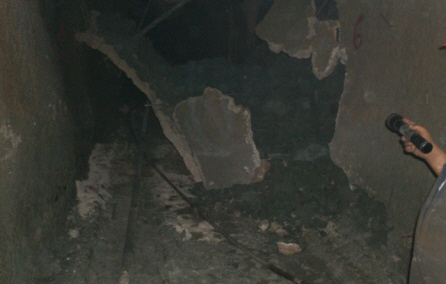
The
misrepresentation of ground conditions, the attempted post-contract
modifications, and Inspection's inattention to actual ground conditions , were
and continue to be the cause of collapses.
The entire
landslide mass in which the tunnel is driven is at risk of failure.
Misrepresentation of Ground Conditions
The original RMR scale, Ground Classes (AA through E), & associated stand-up times as presented by Bieniawski (Figure 4.2, 1988) are illustrated below:
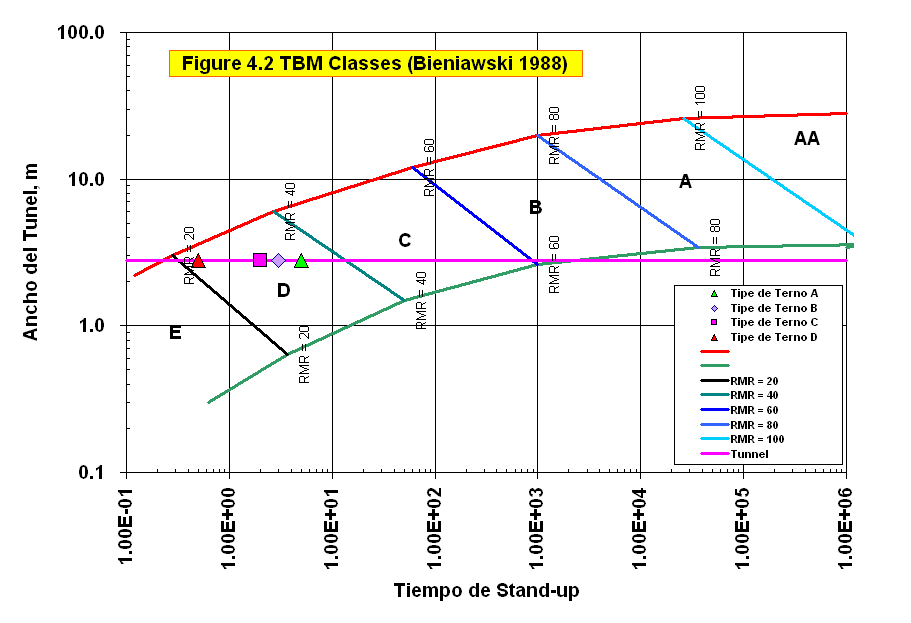
Four 4 distinct Ground Classes (A, B, C, & D) were defined in the project contract
with associated standup times, yet each ground class fell into Ground Class D rather than
in their respective and appropriate Classes. It is immediately obvious,
that Ground Classes were used to imply ground conditions superior to those indicated by
the contract specified standup time.
A further
misrepresentation of the character of the Ground Classes was made by arbitrarily
shifting
Ground Classes A, B, C, & D to lower standup times without specific notice
as shown below.
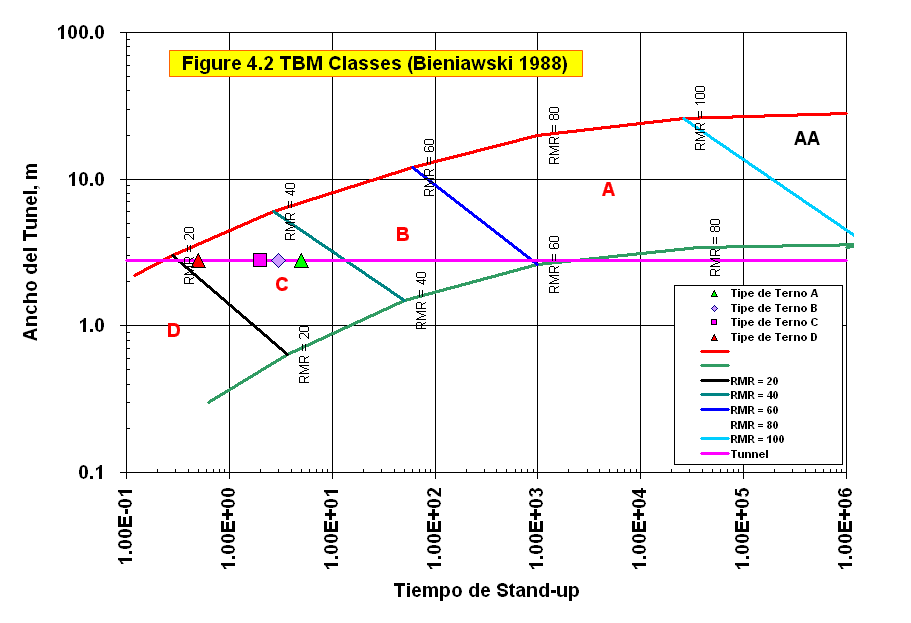
Inspection
enforced this counterfeit classification even though it had not been a part of the
contract. After months of failing to deal with these issues by Inspection,
the tunnel is undergoing progressive failure, with shotcrete cracking, movement
of the lining, and ultimate fallout. Inspection's response: NOTHING
Non-Contractual
Modifications by Inspection
After contract signing, inspection
revised the description and, classification of the ground, its behavior, support
requirements, (including number and diameter of bolts, spacing of steel sets),
and stand-up time of Ground Classes. This change was made & enforced
despite it being outside the signed contract. As a result, it was impossible for the contractor to
achieve the original excavation rates (blue) and having to recalculate and modify his progress rates (red) illustrated below: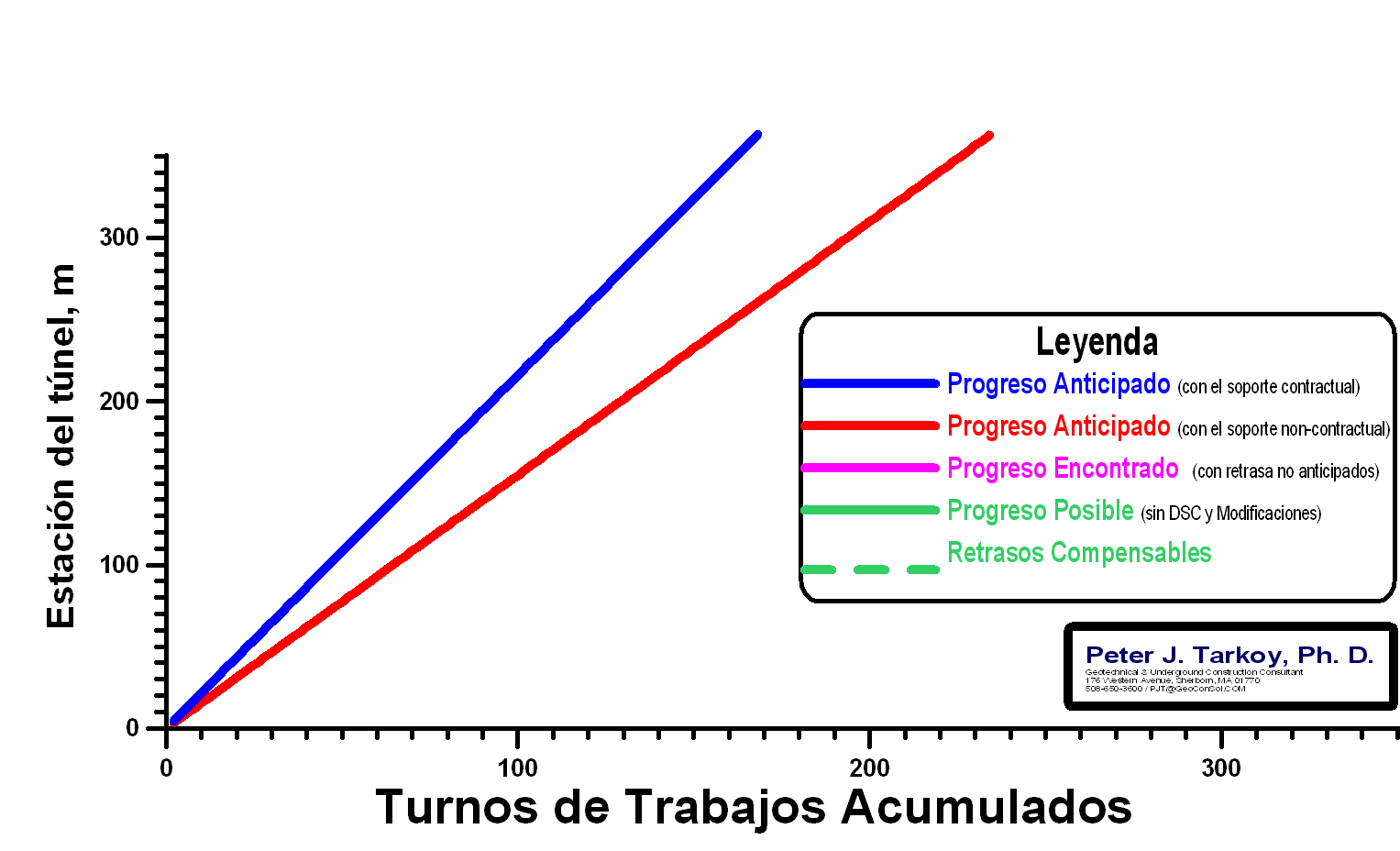
The encountered excavation suffered delays as a result of
several differing site conditions, consequential and associated difficulties
with roadheader excavation, and associated delays. In addition, the
client imposed various non-contractual changes. All of these impacted the
encountered progress rates (in magenta) as illustrated below:
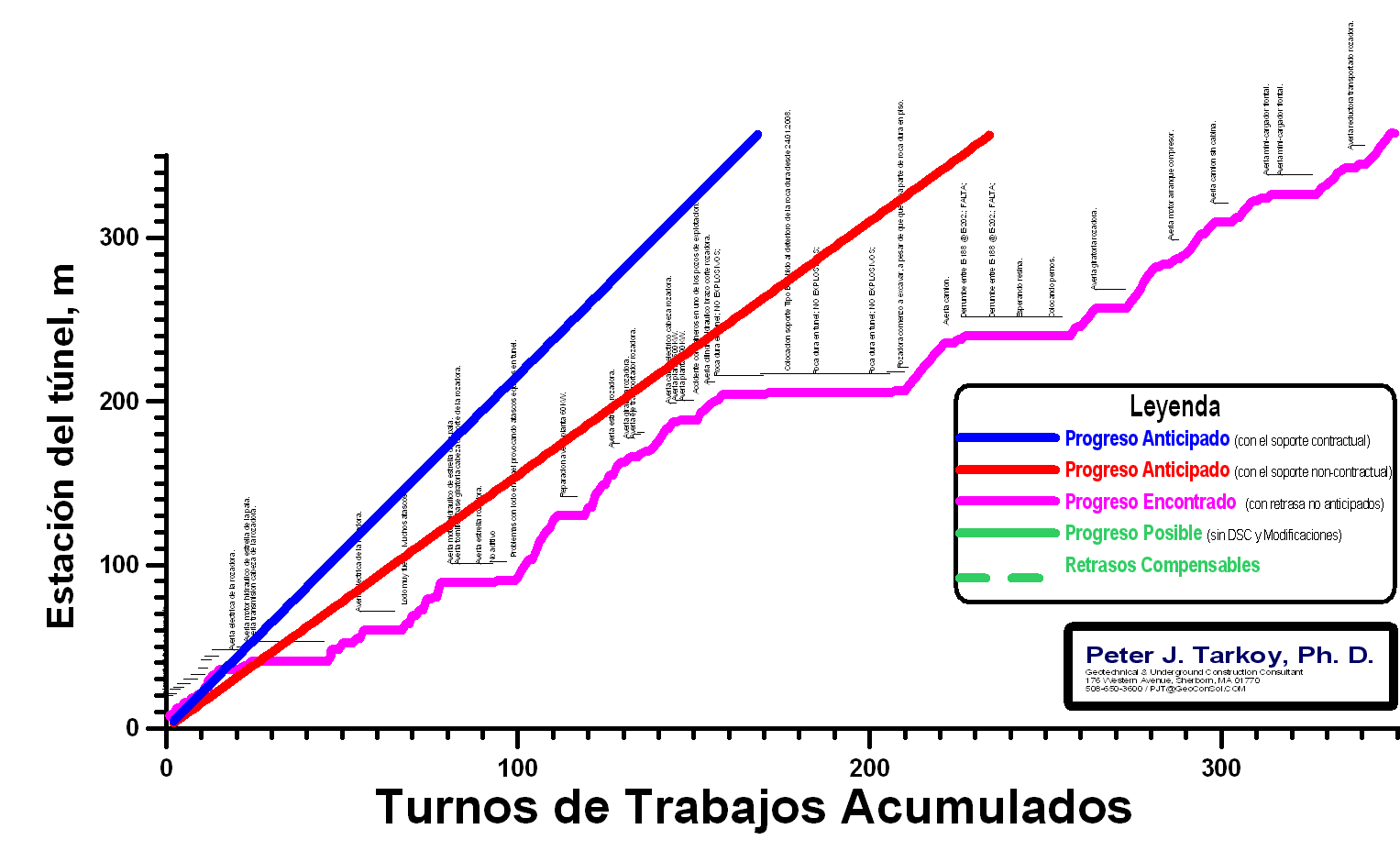
"But for" the delays imposed by the various differing site conditions and client imposed
non-contractual changes, the contractor could have exceeded even his anticipated
baseline rate as illustrated by the green line below:
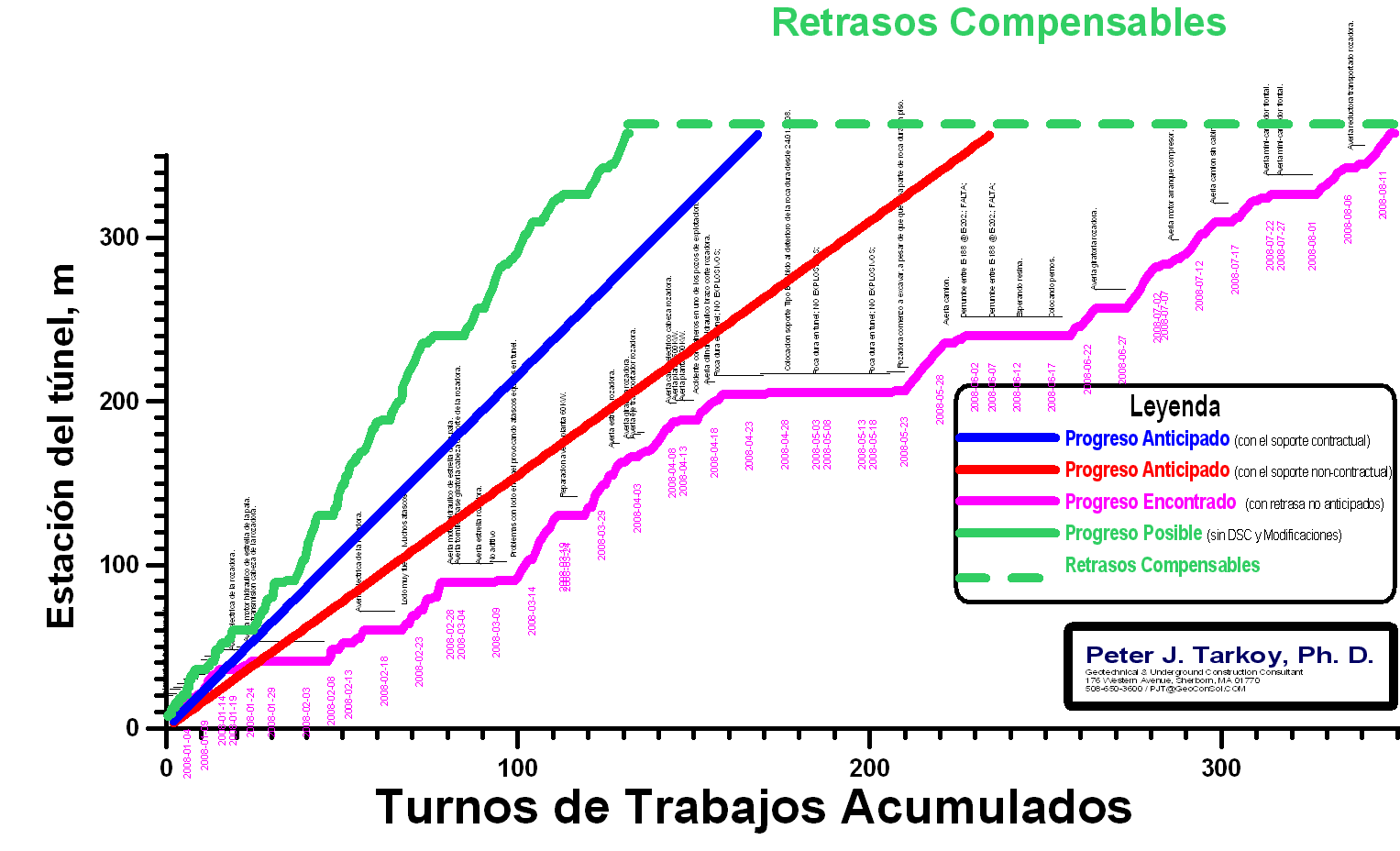
In effect, inspection modified, misrepresented, and enforced a non-standard,
non-contractual, false set of conditions on the contractor. It appears
that the intention was to mislead and coerce the contractor into
accepting a decrease in the price of the work by making fraudulent calculations
of RMR to indicate better quality rock than actually encountered.
The contractor
sought our assistance to determine if his claims were valid. Our investigation revealed
a number of differing site conditions, excavation issues, and the contrived
classifications, all, independently and without ever reading the contractor's claim.
In effect, the contractor's
original claim amount was far less than our investigation uncovered.
It is a
miracle that this good natured contractor continued the work despite the
difficult geological conditions and the oppressive environment created by the
Inspection.
Unanticipated
Short Standup = Excess Shotcrete
The encountered
material did not behave as indicated in the contract documents, instead it air
slaked and raveled faster than indicated in the contract requiring excessive
amounts of shotcrete to fill the voids to the steel sets.
The air slaking stopped when ventilation was turned off.
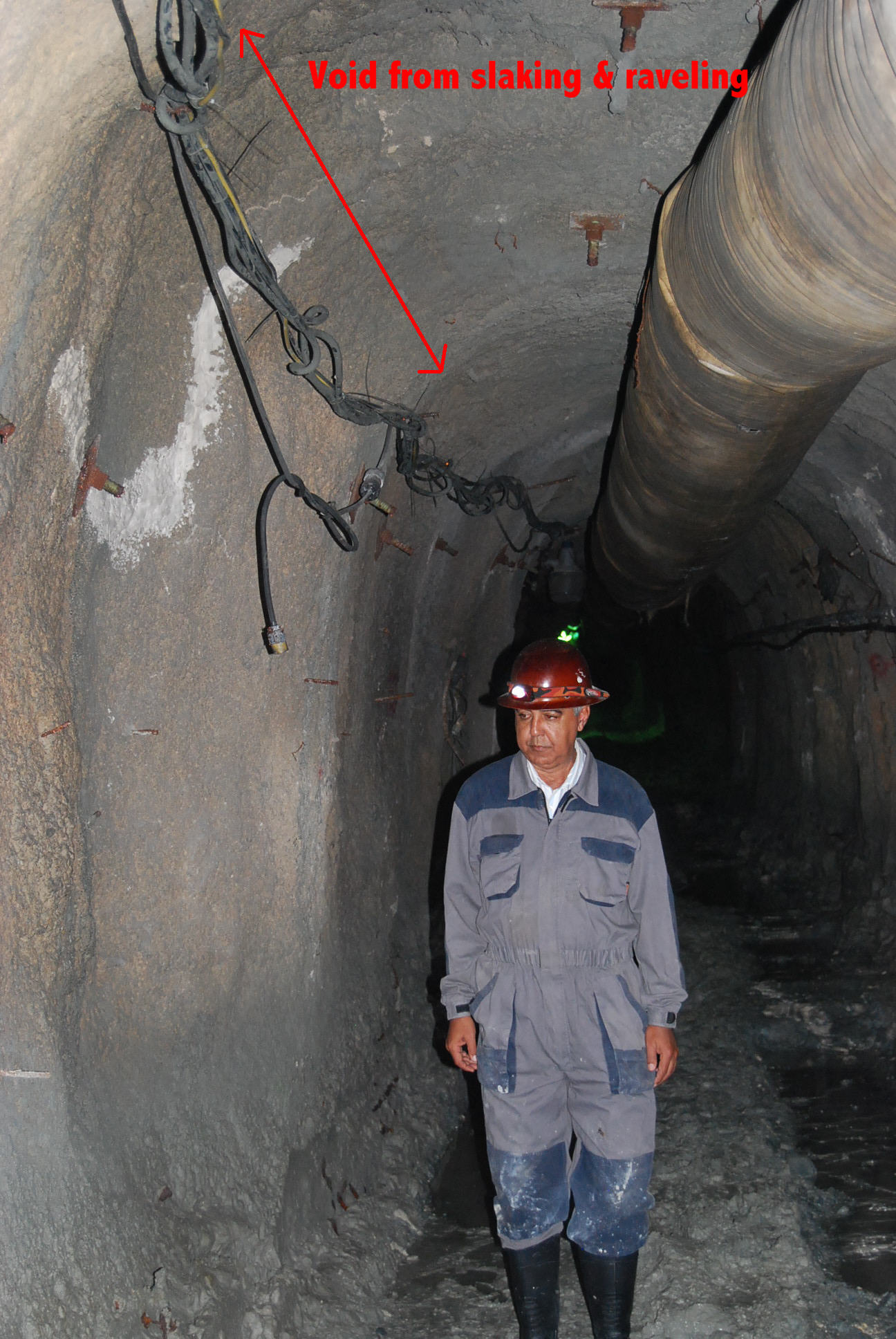
Delays were experienced throughout
the tunnel as a result of excessive shotcrete required to fill the voids left by
unanticipated slaking and raveling.
Tunnel Collapse @
Unanticipated Fault
There was a collapse of the left
wall of a tunnel being excavated in volcanic clast and landslide material. The
unanticipated fault's failure plane was
located beyond the length of the bolts required by inspection for support.
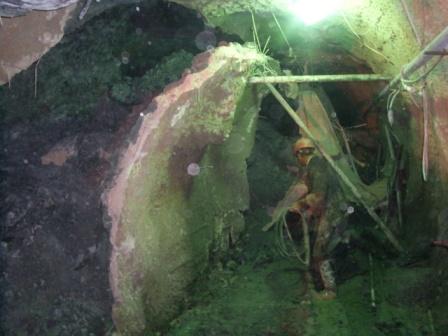
Delays were experienced as a
result of necessary re-stabilization.
|